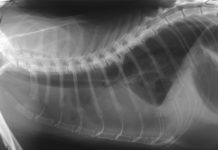Cat predicaments are critical health emergencies that need immediate medical attention. Creating or having a cat first aid kit is suggested for all the cat owners and might be beneficial for your cat in critical times, ‘til the vet care may be pursued through a vet clinic. A lot of the provisions that you’ll be using in the creation of the cat first aid kit will be handy as well in the event of the needs in human first aid. The first aid kit for cats and for people is an important component in an disaster disaster readiness plan too. Read on through this article and learn more about it!
Cat First Aid Kit: What should it contain?
You may purchase cat first aid kits or make your own if you can. A large book bag or a plastic tote is essential for storing your kit. Furthermore, it is advisable that you make not only one but two kits, one you can use at home, and the other one, you can use in travelling to places where you bring your pet.
Your kit should include the following:

- A blanket
- A splint
- Antibacterial ointment
- Antiseptic wipes
- Bandages
- Batteries
- Benadryl
- Books on pet and human first aid
- Buffered aspirin
- Cotton balls and swabs
- Eye wash
- First aid tape
- Flashlight
- Hydrocortisone cream
- Hydrogen peroxide
- Large bottle of water
- Leash
- Mineral oil
- Pepto bismol
- Prescription medications
- Prints of vet documents
- Rubbing alcohol
- Scissors
- Self-activating hot pack
- Self-activating ice pack
- Sterile gauze pads
- Sterile latex gloves
- Styptic powder for the stopping of bleeding
- Thermometer
- Tweezers
Whenever it is possible, a cell phone with a service that can reach 911 in case of emergency with the contact number of the nearby emergency vet clinic is a great addition to the emergency first aid kit. You need to check your batteries from time to time, to make certain that they’re ready to go when you really need them in emergency.
Giving Cats First Aid
Now that you have already known and may have created your own emergency kit for your cat, what you will do with these supplies in case of emergency? Some of the vet clinics offer some courses in cat first aid like a lot of Red Cross branches do, as well as some organizations like PetTech. The courses are commonly justly inexpensive and are usually just a day or two long. A lot of courses may include a book for pet first aid. If what you got, have it, you may keep it with your own first aid kit. Further, in case your course doesn’t offer a book for pet first aid, ask your instructor for some recommendations on one that you can purchase.
Some Cases that Need Cat First Aid
Poisoning
Poisoning may result from the inhalation, ingestion, or interaction with some other toxic substance. Various examples include cleansers or household chemicals, toxic plants, antifreeze, prescription medication, or toxic foods, among others.
What can you do:
- Call your vet’s attention.
- If you are not able to contact, local human poison control centers might be of some help too.
- Retain several product labels, as well as ampules.
- Do your very best in quantifying how much contaminant your pet has ingested and at what particular time.
- Don’t try to persuade the cat to puke, except instructed by the vet. Some traditional remedies may be so hazardous to the cats.
Paralysis
This is the loss of the ability to move parts of the body, for instance the tail or the legs. This might happen because of a traumatic injury or a particular serious heart condition, which causes blood clots to block into the extremities.
What can you do:
- Approach the cat carefully. Even though it cannot move, it maybe is still in pain,
- Keep the cat as still and calm as possible.
- If you need to transfer the cat, do it with care.
- Seek some vet care immediately, as this is an emergency situation.
Breathing Anxiety

Breathing distress or dyspnea is actually characterized by the increase in breathing effort, trouble exhaling and inhaling, and noisy speedy breathing. On the other hand, while normal for dogs, panting is an indication of some respiratory sorrow in the cats. In case of the cat getting a low blood oxygen, the lips and the gums may become blue. Dyspnoea is a health condition that needs emergency attention, and the patients may be tremendously delicate.
What can you do:
- Check if the cat is obstructing.
- Check if the cat is grieving from the heat stroke.
- Keep the cat as still as probable while whooshing it towards the vet.
- In case the cat loses its awareness and stops to breath, perform CPR.
Remember: Knowledgeable and Prepared Saves Lives
The expense and the time that you will invest in making a cat first aid kit and learning how to use it effectively in various medical emergencies may save lives very well. You don’t need to make a separate first aid kit for the people and the pets, even though separate training is needed for the two.









